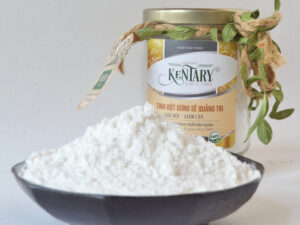Experienced colloidal silver users know that colloidal silver works wonderfully to help heal infections and injuries in aquarium fish.
Not only that, but it helps keep fish looking more vibrant and alive, and it helps keep aquarium water sparkling clear, as well, by killing the bacteria that create cloudy water.
What’s more, using colloidal silver in a fish tank is perfectly safe, as long as you use it in very small amounts.
Would Colloidal Silver Work?

colloidal silver works wonderfully to help heal infections and injuries in aquarium fish – google image
Many experienced colloidal silver users who also have tropical fish aquariums have found that both store-bought and homemade colloidal silver work just as well as commercial products for healing infections in their tropical fish.
There’s even a patent on the internet for using colloidal silver in tropical fish aquariums, which states:
“This is a method of treating a wide range of skin lesions in tropical and decorative fish in which the animals to be treated are exposed to dilute suspensions of colloidal silver.
During the course of the treatment, colloidal silver is added periodically to the aquarium in which the fish lives, so that the water therein has a silver concentration on the order of 1 ppm.
A suitable treatment procedure entails adding 1 teaspoon of colloidal silver which contains about 6 ppm of silver to 10 gallons of aquarium water every other day.
This treatment has been found effective in healing some fish, even those with rather large wounds, in a matter of days.
If a longer treatment period is required, then the colloidal silver addition is continued at the same rate, and then 50 percent of the water is changed once a week, until the lesions have healed.
It was also found that bacteria and virus skin problems could be prevented by having silver colloidal concentrations of 0.3-.05 ppm in the aquarium water.”
Now, that’s fascinating, because it means that in small amounts, colloidal silver can be used to heal infections in aquarium fish, and in even smaller amounts, it can safely and effectively be used as an infection preventative.

An Interesting Example
A Colloidal Silver Secrets Community member named Denise recently posted about her experiences with using colloidal silver to treat her fish in a fish bowl. She stated:
“I have had fish many times just in a bowl with no equipment, and they die and get stressed so easily.
So when I had bad experiences with water going murky too quickly, and fish getting white spot, and having to spend money on chemicals to fix them.
So I figured out, must be bacteria. I researched colloidal silver and fish, and found a website where a man used colloidal silver to save thousands of dollars worth of fish when nothing else worked and that was his last resort.
So I dropped 10 drops of colloidal silver in my fish bowl and have had happy fish now for 6 months.
I change the water once a month; sometimes 5-6 weeks. When I change the bowl I put them in a little water and completely fill the whole bowl with new water and tip them in.
I only put an eyedropper full in every 2 weeks or whenever I feel I want to. A squirt here, squirt there and that is all I use, that is it.
That says a lot about colloidal silver to me. The more I use it the more I love it.”
– Denise
As you can see, a lot of people are finding colloidal silver to be a Godsend for sick fish, whether it be fungal infections, fin rot, or even wounds and injuries from fish fighting with each other.
Another Interesting Example

On the Fishlore.com website for aquarium hobbyists, I found the following interesting post:
“Hello! I read an article about the effects of Colloidal silver on fish 16 inches or less in regards to scale health and healing injuries.
I read the levels regarding toxicity and it had to be quite high, so I figured if I added a capful to my 25 gal tank it wouldn’t be a danger.
That was 2 days ago and I have noticed that my fish are all quite vibrant now.
My Blackskirt tetra is much darker then he was before, my guppy is a deep purple and brilliant peach, and my Danio’s are heavily patterned now…
… It seems to make them happy, they look healthy and are eating, they are just alot more active and pretty to look at…
Has anybody else tried doing this?
– tatty_kassy
Naturally, the anti-colloidal silver crowd began to weigh in on the above comment, making negative remarks about the potential for the lady’s fish “turning blue,” and accusing the poster of unnecessarily “medicating” her aquarium fish.
But she continued to insist that her fish seemed to be healthier and more active than ever after the one-time colloidal silver treatment.
Of course, what the colloidal silver naysayers don’t tell you is that for silver to harm freshwater fish, they have to be massively overdosed in it. (See my rather caustic expose’ of one such study claiming to demonstrate silver’s toxicity to fish, at this link: Environmentalists Claim Silver Is Toxic to Fathead Minnows.)
Indeed, as I’ve written previously, millions of tons of trace silver exists in nature, and has since the beginning of time – including an estimated two million tons of trace silver in the oceans of the world alone, and millions of tons more in freshwater lakes, streams, rivers, ponds, etc.
And in spite of the millions of tons of supposedly “toxic” trace silver contained in the world’s oceans, the sea is literally teeming with wildlife, including uncountable trillions of microscopic living creatures ranging from tiny protozoa and other single-celled microorganisms all the way up the food chain to minnows, shrimp, sardines, larger fish, and even mammals such as porpoises and whales.
So silver is a natural part of the world’s major water habitats, and as long as silver from industrial waste isn’t poured into a waterway, the fish and other aquatic creatures seem to handle it quite well.
Colloidal Silver is better than commercial fish antibiotics
Almost every tropical fish-related website I went to contained similar tales, which is to say, people posting that they’d used colloidal silver in their aquariums and their fish were doing unbelievably well as a result, and replies from other aquarium hobbyists that colloidal silver is “dangerous” and would likely harm their fish.
But I couldn’t find even one documented case of colloidal silver actually causing harm to aquarium fish, as long as it was used within reason.
One reader warned ominously, “Silver is toxic to freshwater fish! You need to use commercial fish antibiotics, like everyone else.”
I could hardly stop laughing at the above comment, considering the fact that the “commercial fish antibiotics” so frequently used by aquarium hobbyists are no different than human antibiotics.
In other words, the most common fish antibiotics are also the most common human antibiotics, i.e., cephalaxon (Keflex), amoxicillin (Penicillin derivative), ciprofloxan (i.e., Cipro) and doxycycline. And those antibiotic drugs are among some of the most toxic substances on the face of the earth.

Yet the aquarium hobbyists who gleefully pour capsules full of those toxic antibiotic drugs into their fish tanks at the first sign of a fish infection, are the same ones who get their panties into a twist at the mere mention of using a little bit of colloidal silver in a fish tank.
Another colloidal silver naysayer wrote, “Colloidal silver kills bacteria indiscriminately. That means it will kill both the good bacteria and the bad bacteria alike, leaving your fish more susceptible than over to sickness with no good bacteria to protect them.”
Of course, I can hardly believe some of the comments are from actual aquarium hobbyists, or even from adult human beings, because anyone with just a modicum of common sense knows that commercial antibiotic drugs also kill both good and bacteria alike.
So apparently, according to the colloidal silver naysayers, you can’t use colloidal silver in a fish tank because it will kill all of the good and bad bacteria alike. But you can use antibiotic drugs on your aquarium fish, because…well…because it’s what everyone else does. And we all need to comply with what everyone else does, right?
Of course, the key to using antibiotic drugs on fish infections is to expose the disease-causing bacteria to the minimum concentration of the antibiotic that will kill it. This is known as the “minimum inhibitory concentration,” or MIC. By using the minimum amount possible, less damage is done to good bacteria.
Another key to using antibiotic drugs in fish tanks is to treat the water afterwards with a good water treatment product containing the enzymes and beneficial bacteria fish need most, like this one.
And guess what? Those are the very same two keys to using colloidal silver against fish infections. Go figure.
Another Interesting Example

Here’s another testimonial, this one from the MyFishTank.net site:
“As a user of Colloidal Silver on occasion I have often wondered if one could use it to treat sick fish but looking at what ‘experts’ mention on various forums I have always been hesitant to use it as a treatment.
Then a few weeks ago my wife purchased 5x Albino Swords which I discovered to have fin rot a few hours after she had added them to the 200 Liter tank.
On discovering this I immediately added a shop bought treatment to the water (all my other fishes fins were fine) but by the next morning the 1st Albino Sword turned into a floater.
Realizing that there may be more than fin rot involved I moved the remaining 4x Albino Swords to the 10 Liter (just over 2 gallons) hospital tank.
Added some sea salt and again some of the treatment. The condition of fins kept deteriorating and a fish a day (in the hospital tank) kept dying.
Down to the last fish I decided to add some Colloidal Silver (almost no fins left) 15ml to the 10 Liters as a last resort.
He was still alive the next morning. I added 15ml more Colloidal Silver for the next 2 days and he kept going (all together 45ml to 10 liters).
I realized that the 200 liter can also be infected and added 15ml to the 200 liter (way less than in the hospital tank) as a precaution.
The sole surviving Albino Sword is happily back her new friends in the 200 liter tank. None of the other fish have gotten sick (or turned blue). The water is crystal clear.
I have even overfed for a few days an all is still normal which means that the Colloidal Silver attacks the bad bacteria rather than the good.
I am adding around 5ml every time I do a water change just to ensure that the Colloidal Silver stays present be it at a very low PPM rate.
Once can of course use it in a separate tank only when treatment is required.
And like with all treatments… remember to follow the correct protocols.”
So as you can see, once again, colloidal silver used in very low amounts can be a Godsend for aquarium hobbyists, in both healing infected or injured fish, as well as preventing infections from taking place when used in small amounts periodically.
Last example
Most of the online comments from people who have used colloidal silver to help cure infections in their aquariums were from people with freshwater tanks. But here’s one from a salt water aquarium hobbyist who says it also works for salt water fish:
“Recently my Clown Fish had ‘ich’ bad . So I had some colloidal sliver laying around and decided to dose the fish with colloidal silver.
I took my two clown fish and put them in a 2 gallon bucket full with saltwater. I dosed 1 tablespoon of colloidal silver every two hours (4 times total ).
24 HOURS later I checked the fish they still had some spots left on them but most of the parasite was gone.
So I then added the fish back into my display tank in within a day all the spots were gone and the fish look great.

Colloidal silver is a natural antibiotic and anti-parasitic once it is digested by the fish they have the silver in their system and it stays there and gets rid of all parasites.
Colloidal silver has become like my coral dip but for fish. I no longer have ‘ich’ because all new fish I get I let them sit in a colloidal silver based water for a couple hours and the ‘ich’ never develops when I added them to my display tank.”
Of course, it’s important to note that in saltwater aquariums containing live coral reefs, colloidal silver should never be used directly in the aquarium.
That’s because live coral is made up largely of tiny microscopic living creatures known as polyps, along with algae which lives in symbiosis with the polyps.
Unfortunately, colloidal silver can be toxic to both the tiny microscopic polyps and the algae that make up live coral reefs. And even the small amount of silver needed to heal fish of infections can be enough to cause harm to the live coral reefs.
This is why the individual who wrote the above testimonial emphasized that he treats his infected salt water fish with colloidal silver, but only in a separate tank set aside specifically for that purpose.
So there you have it. Using colloidal silver in fish aquariums to help heal fish infections and external injuries is apparently pretty much like using it for humans: It works, as long as you don’t overdose the fish on it by using too much. A little bit goes a long way.
According to tropical fish enthusiasts, you should never forget that tropical fish infections are generally caused by imbalances in the aquarium habitat that allow infectious microbes to proliferate.
So merely killing the infectious microbes – whether with colloidal silver or with standard fish antibiotic drugs – is not enough.
The water in the aquarium also needs to be checked for imbalances (such as excess ammonia caused by rotting fish food and fish excrement), followed by a proper cleaning along with the use of products designed for correcting such imbalances. Your local aquarium shop can give you guidance for handling this correctly.
Also, as we discussed briefly above, many advocates of using colloidal silver to help cure tropical fish infections say you should put infected fish into a smaller “hospital tank” while they’re being treated.
That way, the infected fish won’t infect the others in the community tank. And you can take care of any chemical imbalances in the community tank before returning your healed fish from the “hospital tank.”
This will help prevent the healed fish from becoming re-infected when you return him to the community tank after he’s been healed in the “hospital tank.”
READ MORE
-
 HEALTHY NUT DRIED CHICKEN AND RICE CAKEVND100,000 – VND450,000
HEALTHY NUT DRIED CHICKEN AND RICE CAKEVND100,000 – VND450,000 -
 HEALTHY NUT SEAWEED AND RICE CAKEVND100,000 – VND450,000
HEALTHY NUT SEAWEED AND RICE CAKEVND100,000 – VND450,000 -
 GINGER EXTRACT POWDERVND150,000 – VND550,000
GINGER EXTRACT POWDERVND150,000 – VND550,000 -
 Colloidal Nano Silver 7ppmVND120,000 – VND1,000,000
Colloidal Nano Silver 7ppmVND120,000 – VND1,000,000 -
 Colloidal Nano Silver 10ppmVND150,000 – VND1,200,000
Colloidal Nano Silver 10ppmVND150,000 – VND1,200,000
- COLLOIDAL SILVER CURED PETS OF SERIOUS UPPER RESPIRATORY INFECTION!
- USING COLLOIDAL SILVER FOR ANIMALS WITH UPPER RESPIRATORY INFECTIONS.
- HOW COLLOIDAL SILVER SAVED MY DOG FROM A NASTY STOMACH INFECTION





